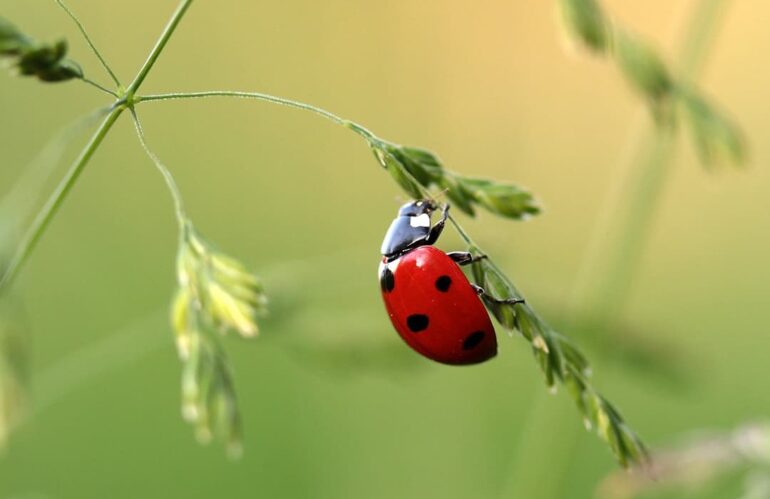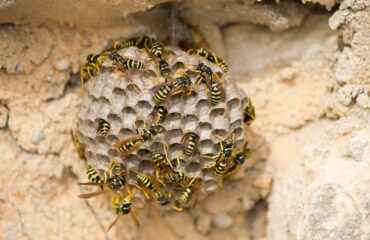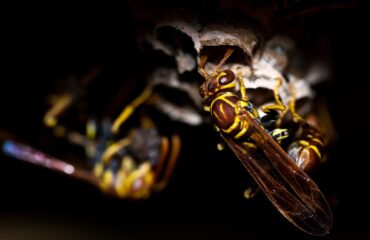When growing fruit trees and vegetable crops, a lot of effort is spent on insect pest control. The use of insecticides causes both environmental damage and kills both pests and beneficial insects. Many of them not only help in pollination of plants, but also feed on pests, helping humans. Knowing what insects look like and which ones are useful, you can create conditions for attracting them to the site and use much less chemicals.
Ladybugs
Many of us have been familiar with ladybugs since childhood. Everyone knows that this is a harmless insect, and few people know that they feed on ticks, mealybugs, whiteflies, and its larvae feed on aphids. Moreover, ladybug larvae have an excellent appetite and eat up to 150 aphids per day.
If aphids appear on your site, do not rush to use insecticides. You can use folk remedies, such as soapy water, and additionally attract ladybugs by spraying the affected plant with sugar syrup.
The insect is also attracted to the aroma of marigolds, dill, caraway seeds, pelargonium, and cilantro. Planting these plants between beds of cucumbers, cabbage, and zucchini will be an excellent prevention of aphid damage.
The Fazenda agricultural store offers high-quality seeds of vegetables, herbs and ornamental plants. The website catalog offers a wide range of crops with descriptions and photos at the most affordable price.
In addition to the usual orange color with black dots, the class of ladybugs includes individuals with yellow and black color. The former have black spots, and the latter have red or yellow spots.
Goldfinch
The adult insect looks like a small butterfly with translucent green wings with light streaks. The insect and its larvae feed on aphids, and the offspring of the insect eat the pest in huge volumes. Because of this, some farms specially breed the lacewing.
During the season, the lacewing lays up to two clutches of eggs. They can be seen under the leaves of plants in the form of thin hanging threads. The hatched sticky things fall to the ground and begin to feed on pests.
Galia afidimiza
A small fly a few millimeters in size repeatedly lays eggs during the season. The hatched eggs actively feed on aphids for two weeks. It takes no effort to attract the Aphidimysis gall midge to your garden.
Beetles
Everyone has probably seen this beetle with a black shell with a greenish tint. The insect moves around quite quickly and eats everything that comes its way: caterpillars, moths, scoops, fly larvae and other pests. These orderly beetles eat up to 300 units of any animal during the summer.
The beetle lays its eggs in moist soil. They look like round rice grains. The larvae that emerge look like a worm due to the lack of a shell, have a pair of legs in the front and powerful jaws. They also actively feed on insects.
For the winter, the beetle settles down under stones, firewood, and hides in the depths of sawdust or shavings.
Staphylococcus aureus
The black, agile beetle will raise its abdomen in case of danger, which makes it resemble a scorpion. Staphylines are useful beetles in the garden, not only because they eat insect pests. The beetle larvae also feed on the larvae and pupae of flies and caterpillars.
The insect prefers a dark and damp place: deep in the masonry with firewood, under dry leaves, it can be found in a manure or compost heap.
Useful flies
Tortoise flies and tahini flies also come to the aid of gardeners. Tarantula flies have tenacious legs and a powerful proboscis that can easily pierce the shells of pests such as May beetles and wasps. They also actively feed on larvae found in the soil.
Beneficial tahini flies have black hairs on their bodies and transparent wings. Females lay eggs directly on caterpillars, larvae of Colorado potato beetles, weevils, and sawflies. The emerging parasitic larvae feed on the flesh of their hosts.
Colorado potato beetle
Quite useful beetles in the garden, they live in abundance on trees, feeding on pests in the bark: mustaches, weevils, bark beetles, bark beetles, sharpeners and their larvae. The insect has an elongated body, brown legs with villi, black and red color with a wide white stripe in the lower part.



